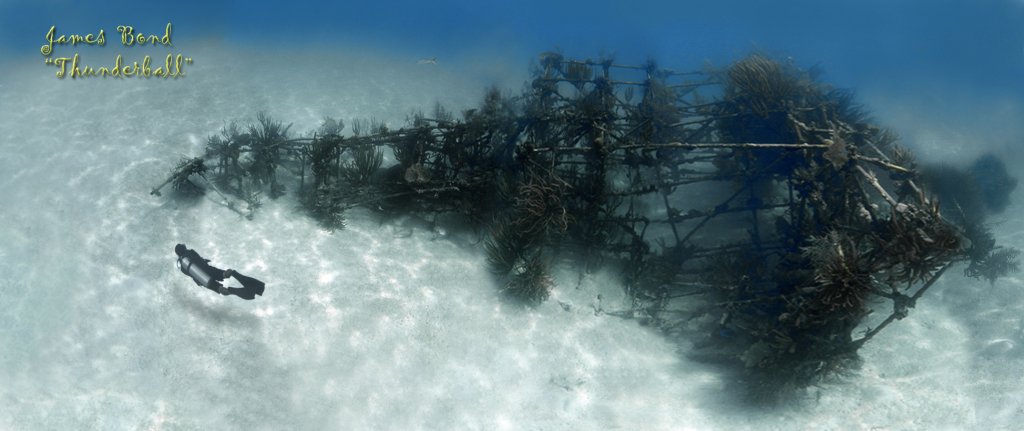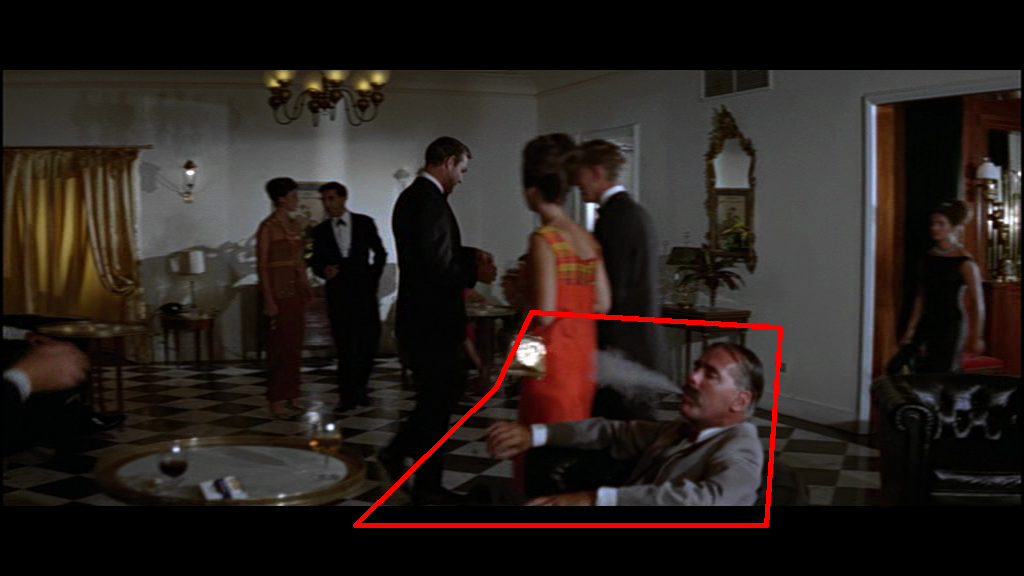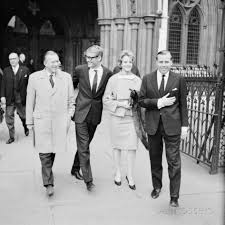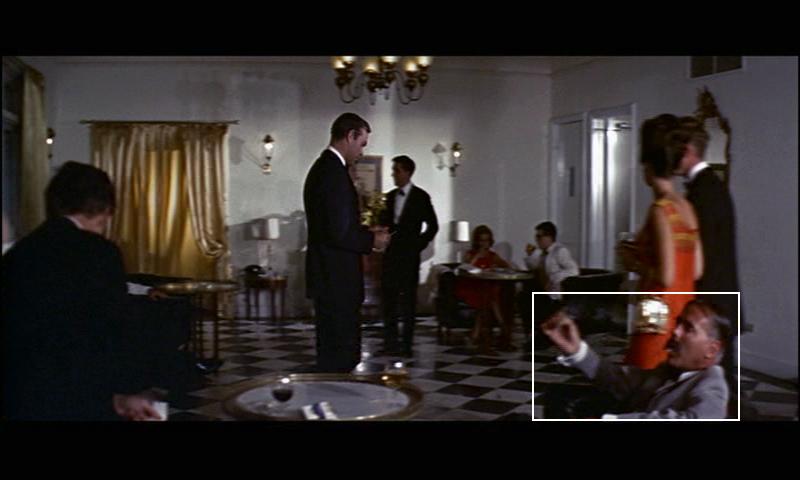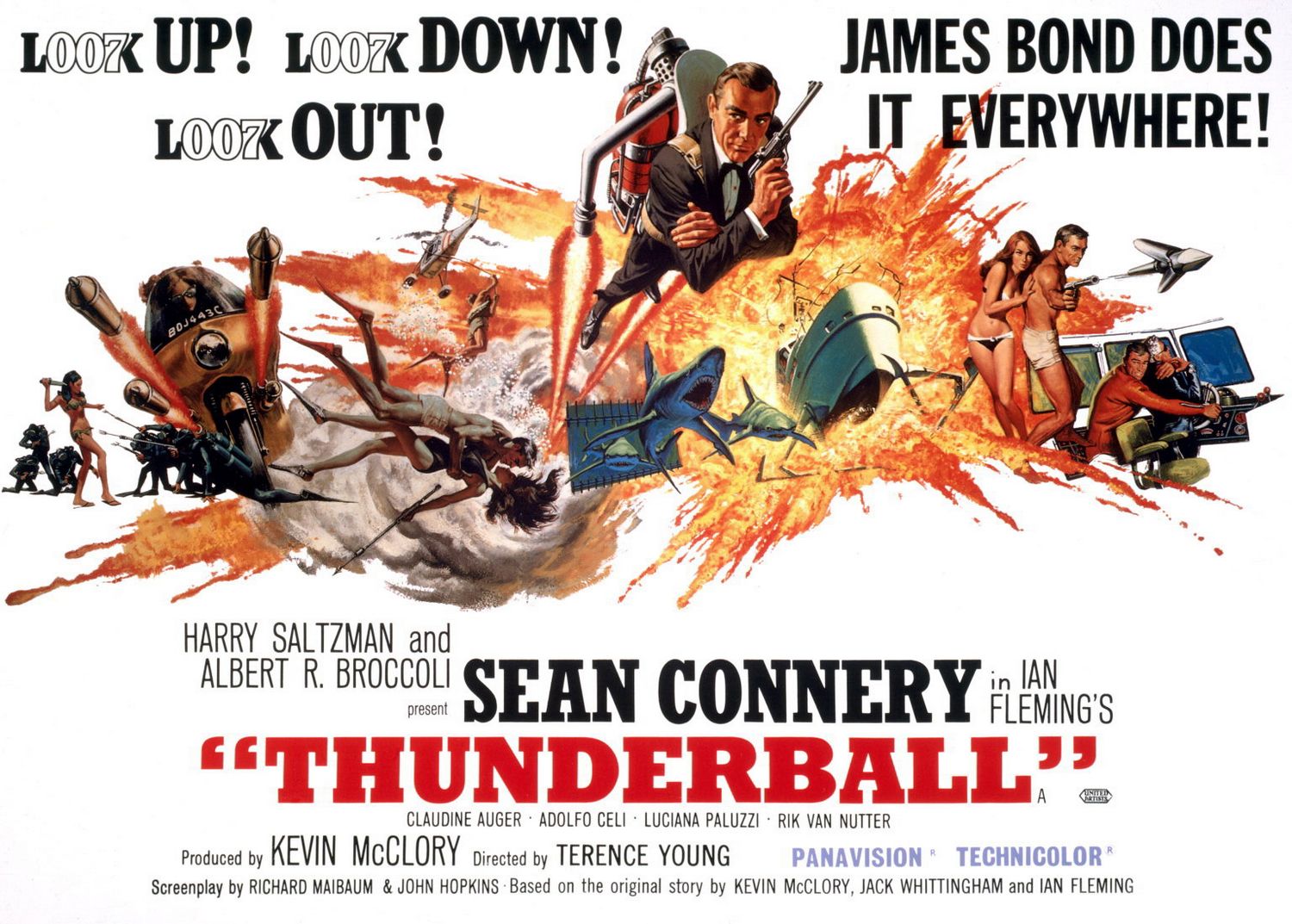| Det har varit mycket bråk om rättigheterna till "Åskbollen" under
åren. På denna sida skall jag försöka bena ut hela historien. Man skall
dock tänka på att vissa detaljer av historien varierar beroende på vem
man talar med och därför kan det hända att något på denna sida kan vara
avvikande från vad som egentligen hände. Men, så vitt jag vet, så var
det så här: Först en mycket nedkortad version
av händelserna, för de av er som inte orkar läsa allt:
Ian
Fleming skrev 'Thunderball' som ett manus tillsammans
med ett par andra. Sedan gav han ut manuset i bokform och blev han stämd
och domstolen beslutade att Fleming skulle få bokrättigheterna och Kevin
McClory, den av medförfattarna som stämde Fleming, fick
filmrättigheterna.
Nu till den mer utförliga historien:
1958 introducerade Ian Flemings vän, Ivar
Bryce, honom för den unge (33 år) regissören Kevin McClory.
Bryce hade inlett ett samarbete med honom och bildat bolaget 'Xanadu
Productions' (efter namnet på Bryce hus på Bahamas) för att filma
McClorys film, 'The Boy And The Bridge'. McClory upptäckte
Flemings böcker och förstod att de kunde göra sig mycket bra på den
biograferna. Ian Fleming hade vid denna tid börjat bli lite desperat, då
inget filmbolag verkade vara intresserad av att filma hans böcker, så
han blev glad över McClorys entusiasm.
1959 hade Fleming, McClory ett mer eller mindre
muntligt avtal om att Fleming skulle skriva en ny historia till filmen,
då de inte ville ta någon som redan fanns i bokform. Bryce skulle
producera och McClory skulle regissera och dessutom hjälpa Fleming med
att skriva manuset.
Ernest Cuneo, Flemings och Bryces amerikanske vän från andra
världskriget, blev också involverad efter ett tag.
Under en lång helg i maj 1959, blev Bryces hem Moyns
Park i Essex, arenan för en stor brainstorm för de fyra männen. Det var
där som de kom fram till många idéer om filmen. McClory ville ha många
undervattensscener, då han var intresserad av dykning. Cuneo kläckte då
idén om att förlägga storyn på Bahamas. Detta var att föredra av flera
skäl. Det var ett billigt ställe att spela in på, det skulle underlätta
kontakter med Hollywood samt att det skulle bli billigare av
skattetekniska skäl. Bryce och McClory hade dessutom hus på Bahamas.
McClory skrev ner alla idéer som kommit fram under helgen. Namnförslag
på filmen var så här länge antingen 'James Bond Of The Secret
Service' eller 'James Bond, Secret Agent' och
storyn handlande om ett gäng skurkar utpressade ett flertal länder och
hotade med att detonera ett par stulna atomvapen.
Under denna tid var det maffian som låg bakom dådet. SPECTRE uppfanns
inte förrän senare då Fleming använde manuset till sin bok,
""Åskbollen".
Tilläggas bör att det kan ha varit så att det var Cuneo som kom
på den grundläggande historien till manuset från början.
De fyra var under den här tiden även exalterad över det faktum att
McClory och Bryces film, 'The Boy And The Bridge', hade blivit
utsedd till Storbritanniens officiella bidrag till filmfestivalen i
Venedig.
Efter den helgen skildes de fyra åt, med löften att hålla de övriga
underrättade med hur manuset framskred, men i juli 1959
hade 'The Boy And The Bridge' premiär i England och den gick
uruselt, vilket gjorde att Fleming och Bryce blev oroliga för
Bondprojektet. Relationerna mellan Fleming/Bryce och McClory blev av
detta ganska svala. Kanske trodde de att McClory var för ung och
oerfaren för ett projekt i denna storlek. En annan faktor var att MCA,
Flemings agentur, hade fått känning från flera stora filmbolag som
verkade vara intresserade av James Bond.
Ju längre projektet gick, växte det i storlek och kostnad. Bryce hade
förlorat mycket pengar på 'The Boy And The Bridge' och MCA sade
till Fleming att en mer erfaren regissör skulle locka till sig mer
pengar från Hollywood. Det var antagligen vid denna tid som Fleming och
Bryce tappade förtroendet för McClory, som fortfarande satt och jobbade
med manuset, som nu hade fått namnet 'Longitude 78 West'
I september 1959 hölls ytterligare ett möte där
Fleming föreslog att ta in en annan regissör, och att McClory skulle
producera. Motvilligt gick McClory med på förslaget, då han trots allt
var kvar som producent och manusförfattare. Bryce hade tagit en mer
tillbakadragen roll, som i dag skulle kunna kallas "Executive Producer".
Vid oktober samma år hade Fleming börja att ägna
mindre tid åt projektet, då han blivit engagerad av Sunday Times att
skriva en artikelserie kallad ´Thrilling Cities', vilket tvingade honom
att göra en fem veckor lång jorden runt-resa.
McClory anställde då en ny författare, Jack Whittingham, för att
hjälpa honom att slutföra manuskriptet. Något som både Fleming och Bryce
gick med på.
I december skickade McClory och Whittingham den
senaste versionen av manuset till Fleming, som tyckte om det, men var
fortfarande lite reserverad angående filmens budget. Titeln hade han
dock inte så mycket över för och ändrade den till 'Thunderball',
samt skrev till i manuset att Bonds uppdrag gick under namnet "Operation
Thunderball".
Under den kommande månaderna tappade Fleming mer och mer förtroendet
till McClory och Fleming (tillsammans med Bryce) började fundera på
McClorys position i den kommande filmen.
I januari 1960 kom McClory till Flemings hem,
Goldeneye, för att diskutera det senaste utkastet av manuset. Fleming
berättade då att han och Bryce var beredda att lämna över hela projektet
till MCA med rekommendationer att McClory skulle vara producent. Men om
MCA eller någon filmstudio skulle avslå projektet på grund av McClory
skulle vara producent, skulle McClory backa och låta projektet fortsätta
med en ny producent.
Filmprojektet hade helt enkelt blivit för stort för Fleming och Bryce
att klara av ensamma.
Cuneo hade helt lämnat alla intressen för projektet, då han tyckte att
bara hade hjälpt sina vänner lite i idéstadiet. Han sålde alla
eventuella rättigheter i projektet till Bryce för den symboliska summan
av en dollar.
Då det såg ut som att projektet skulle rinna ut i sanden, samt att
Fleming hade press från sitt bokförlag att skriva en ny Bondbok, tog han
den grundläggande storyn i 'Thunderball' och skrev om den till en roman.
Om han medvetet menade att stjäla manuset från McClory och Whittingham,
kan diskuteras. Fleming var, å ena sidan naiv när det gällde show
business, men å andra sidan så kan han och Bryce tänkt att medvetet köra
över den yngre (och irländske) McClory. Fleming dedicerade boken till
Cuneo, som en litet erkännande till historiens ursprung.
1961 publicerades boken "Thunderball'
och McClory blev givetvis chockad och arg över att Fleming använt storyn
utan varken hans eller Whittinghams godkännande och stämde Fleming.
En snabb rättslig process gav bokförlaget rättigheterna att kunna
fortsätta publicera boken, då så många exemplar redan skickats till
butikerna. En slutlig prövning av fallet skulle komma senare, men det
skulle ta ytterligare två år.
Och under de två åren skulle det hända mycket med James Bond.
I slutet på 1960 köpte
Harry Saltzman en option på en kommande James Bond-bok och
1961 bildade han och
Albert R. Broccoli bolagen Danjaq S.A. och EON Productions
Limited. United Artists gick med på att hjälpa till med den första
filmen.
"Thunderball"
hade precis kommit ut och blivit en stor succé, vilket gjorde att
Broccoli och Saltzman valde denna till sin första film. Broccolis vän
Richard Maibaum anställdes för att skriva om boken till ett
filmmanus (trots att det redan existerade ett färdigt manus plus ett
flertal utkast!). Men då det kom fram att rättigheterna till detta manus
var under utredning fick de lägga "Thunderball" åt sidan och de valde
boken "Dr.
No" istället.
Sean Connery spelade Bond och
filmen hade premiär i England i oktober och resten är historia...
Men i november 1963, strax efter att den andra
filmen, 'From
Russia With Love' haft premiär, började den slutliga prövningen
av fallet.
Broccoli och Saltzman hade börjat med förberedelserna till den tredje
filmen, 'Goldfinger'
och var självklart nervösa över vad domen kunde medföra. Fleming senaste
bok, "On
Her Majesty's Secret Service", var hans största succé hittills
och hans nästa bok, "You
Only Live Twice", skulle publiceras under våren 1964. James Bond
hade vuxit enormt sen sist och mycket stod på spel.
I rättssalen var det McClory mot Fleming (för plagiat) och Bryce (för
kontraktsbrott [Xanadu Productions]). Det var meningen att Jack
Whittingham skulle varit vid McClorys sida i stämningen mot Fleming, men
han hade inte råd i detta läge och var endast med som vittne.
Whittingham stämde dock Fleming senare, men åtalet lades ner efter
Flemings död 1964.
Fleming hade redan fått sin första allvarliga hjärtattack och var svårt
sjuk under de tre veckor som rättegången pågick.
McClory hade starka bevis på att han hade rätt, medan Fleming ansåg att
originalidén kom från Cuneo, som hade sålt sina rättigheter till Bryce.
Det var till slut Bryce som, på grund av McClorys starka bevis och
Flemings vacklande hälsa, som gick med på en kompromiss.
Uppgörelsen gick ut på att Fleming fick bokrättigheterna, så länge alla
kommande upplagor av boken skulle innehålla ett meddelande att den var
baserad på ett manus av Kevin McClory, Jack Whittingham och Ian Fleming.
Han fick även rättigheterna till karaktären James Bond.
McClory fick film- och TV-rättigheterna (inklusive då rätten att använda
personen James Bond vid detta/dessa tillfällen), samt copyrighten på
alla existerande manus och utdrag av boken. I dessa manus fanns
dokumenterat ytterligare nio olika manusbehandlingar och utkast.
Bryce fick betala en okänd summa till McClory och Whittingham för
skadestånd, samt betala de rättsliga kostnaderna för alla inblandade.
Den slutliga summan låg på cirka 85 000 pund.
Nu när McClory äntligen hade rättigheterna att göra sin egna Bondfilm,
brydde han sig inte så mycket om att EON hade gjort en serie Bondfilmer
som blivit populära, utan började leta efter skådespelare som kunde
spela Bond.
Broccoli och Saltzman ansåg givetvis att denna konkurrerande Bondfilm,
skulle skada deras egna filmer och beslöt sig för att fråga McClory om
han var intresserad av ett samarbete. McClory skulle få stå som ensam
producent, trots att de alla tre producerade filmen. McClory godtog
detta och i avtalet gick McClory också med på att inte använda sina
"Thunderball"-rättigheter under de tio kommande åren efter att filmen
släppts och att Danjaq S.A. skulle ha de fortsatta rättigheterna för den
filmen som de gjorde 1965.
Ett nytt, uppdaterat, manus skrev till filmen av
Richard Maibaum och John Hopkins.
Efter att tio årsperioden tog slut försökte McClory göra en ny Bondfilm
med det material som han hade rättigheterna till.
Den 12 maj 1976 lade han ut en helsidesannons i
tidningen Variety som sade att filmen 'James Bond Of The
Secret Service' skulle börja filmas i februari
1977.
Manuset skrivs tillsammans med
Sean Connery och thrillerförfattaren Len Deighton och namnet
på filmen ändrades till 'Warhead'.
United Artists och Danjaq svarade på dessa förberedelser
också genom en helsidesannons i Variety, där de sade att de hade
alla rättigheter på allt som hade med James Bond att göra förutom boken
"Åskbollen"
och att McClorys film endast var en ytterligare en filmatisering av
denna.
De två företagen flåsade McClory rejält i nacken och deras juridiska
maskineri gick hårda matcher med honom. Till slut insåg Connery vilka
problem de stod framför bara att göra filmen, så han gick därifrån.
Detta gjorde det inte lättare för McClory och projektet rann till slut
ut i sanden.
Eftersom SPECTRE och Blofeld skapades i samband med "Thunderball",
ligger frågan om vem som egentligen äger rättigheterna till dem i den
rättsliga gråzonen. EON har dock klokt nog undvikt att blanda in dem
efter filmen 'Diamonds
Are Forever' från 1971. 1981
års 'For
Your Eyes Only' räknas inte, då Blofeld inte nämns vid namn
varken i filmen eller i rollistan!
Runt 1980 upptäckte en av cheferna för filmbolaget
Lorimar, Jack Schwarzman, projektet. Han var på att lämna
Lorimar vid denna till för att öppna eget och 'Warhead'-manuskriptet
facinerade honom. Han var en duktigt jurist och trodde att McClory
verkligen kunde göra filmen trots alla juridiska problem, så filmen var
på igen...
Han lyckades intressera
Sean Connery att spela huvudrollen igen. Sean tackade säkert ja av
flera skäl, hans fru tyckte han skulle göra det, det var säkert en del
pengar i potten och kanske det viktigaste skälet (?) - Connerys stjärna
var fallande och han behövde en stor film igen... Han fick dessutom
väldigt mycket att säga till om när det gällde hur filmen skulle göras
och om folket bakom och framför kameran.
Schwarzman köper även rättigheterna till denna inspelning av filmen av
McClory och han lämnar den bakom sig - för denna gång. Köpet innebar
bara att Schwarzman får göra en film av manuset och att McClory
nämns som en av producenterna i filmen ("normalt" hedersutnämning i
Hollywood). McClory har alltså inte haft någon inverkan på denna film.
Manuset skrivs om (bland annat av Schwarzmans frus bror Francis Ford
Coppola). Schwarzman slängde ut Connery/Deighton-manuset, då detta
var mer som en uppföljare till 'Åskbollen' än en remake och skulle ha
orsakat mycket juridiska problem.
Titeln ändrades till 'Never
Say Never Again' och i september 1982 så börjar
då äntligen inspelningen och efter en mycket tuff inspelning, blir
filmen klar året efter.
Den 20 juli 1989, bara några veckor efter att 'Tid
För Hämnd' haft premiär går McClory ut med hans senaste projekt,
'Warhead 8'. Ännu en nyinspelning av manuset alltså och
eventuellt skulle
Pierce Brosnan spela Bond. Inte helt förvånande rann detta projekt
ut i sanden...
1992 dök han upp igen! Denna gång skulle det göras
en TV-serie baserad på manuset. Inte heller detta blev verklighet...
Ian Fleming dog 1964, Jack Whittingham i
slutet av sjuttiotalet. Ivar Bryce avled
1985 och Ernest Cuneo 1988.
Vid detta laget var det bara McClory kvar i livet av dem som skapade
"Thunderball" i slutet av femtiotalet.
...och just som man trodde att affären var över för länge sen, händer
två saker ungefär samtidigt (en tveksam tillfällighet...?); den
17 november 1997 lämnar MGM Inc. in en
stämning mot Sony Pictures, där de hävdar att de köpt upp
distributionsrättigheterna till filmen '
Never Say Never Again' från Taliafilm och de vill nu ha
upprättelse för eventuella copyright-överträdelser som Sony kan ha
överskridit när de lanserat sina planer i mitten av
oktober 1997 att göra en ny serie med Bondfilmer (plus att man vill
visa för världen att Bond tillhör MGM).
Sony Pictures, å sina sida, har tagit Kevin McClorys parti och stämmer
MGM på en del av de pengar som ALLA deras Bondfilmer dragit i under
åren. Sony hävdar att McClory var en av dem bakom idén om en serie
filmer om James Bond, något som han senare aldrig fått någon ersättning
för (förutom för 'Åskbollen'
, se ovan). MGM och Danjaq anser att McClory har vilsefört Sony och att
han har inga som helst rättigheter till de övriga filmerna. Man kan ju
definitiv hålla med MGM och Danjaq i detta, men underligare saker har
hänt i domstolarna...
När Sony Pictures gick ut med meddelandet att de skulle göra en egen
Bondserie, hävdade även McClory att han, i och med
"Thunderball"-rättegången, även äger rätten till alla Bond-uppslag som
innehåller vissa inslag såsom: gömda bärplansbåtar, användandet av
Bahamas, atomvapenstölder och den sicilianska maffian. Intressant
tankegång, eller hur...? :-)
Den 29 juli 1998 förbjöd domstolen Sony Pictures
att använda sig av James Bond i något sammanhang (reklam, inspelningar
med mera) använda sig av namnet James Bond innan domstolen gör sitt
slutgiltiga beslut.
I slutet av mars 1999, en vecka innan den
slutgiltiga rättegången, gav Sony Pictures upp. I uppgörelsen
fick Sony betala MGM 5 miljoner dollar och bekräfta att de
inte hade någon rätt till att göra Bondfilmer. Det inkluderar även en ny
version av 'Never
Say Never Again'.
Men uppgörelsen gjorde också att MGM fick betala Sony 10
miljoner dollar för de globala rättigheterna till alla filmer och
rättigheterna till
filmen och
boken
"Casino Royale". De hade redan 50 procent av rättigheterna då
United Artist köpt dessa strax efter att Charles K. Feldman
(som hade rättigheterna innan) avlidit. De andra 50 procenten stannade
kvar i Colombia Pictures (som gjorde filmen). UA gick
senare ihop med MGM och Colombia köptes upp av Sony
Pictures.
MGM äger nu rättigheterna till alla Bondfilmer inklusive 'Never
Say Never Again' plus att de har rätten att filma boken "Casino
Royale".
Trots denna uppgörelse gav inte Kevin McClory upp. Han ansåg att Sony
gjort denna överenskommelse bakom ryggen på honom och skrev inte under
den överenskommelse som Sony gjorde med MGM och under
hösten 1999 började en ny rättegång mellan McClory och MGM. Denna
kamp tog slut ett halvår senare då domstolen kom fram till att han
INTE hade några rättigheter till procent i Bondfilmerna. Ett av de
stora skälen som domaren hade var att McClory hade väntat för länge
innan han gick till rätten.
I början av juni 1999 gick McClory dessutom ut
med att han fått två företag (ett tyskt och ett australiensiskt)
intresserade att börja med att göra ännu en film baserad på boken "Åskbollen",
denna gång skall den heta 'Warhead 2001'. Detta skulle sedan leda
till ytterligare Bondfilmer. Detta rann dock också ut i sanden.
Kevin McClory avled den 20 november 2006 på
Irland med stora skulder. Därmed borde alla kamper om rättigheterna av
Åskbollen vara över.
Det kan vara en intressant tanke att leka med vad som skulle hänt om
McClory slutat med sin besatthet över Bond. Filmen Åskbollen gav honom
mycket, mycket pengar. Om han istället för att kämpa emot jättarna lagt
de pengarna på att grunda ett eget produktionsbolag och gjort egna
filmer istället, det som han faktiskt hade en stor passion att göra, hur
mycket mer lycka hade han (och alla andra i denna affär) haft då?
|









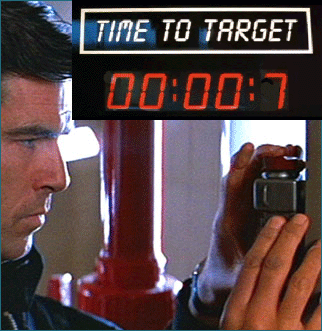

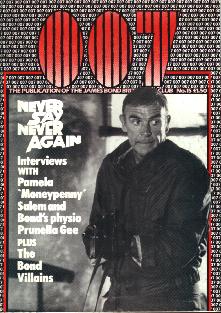
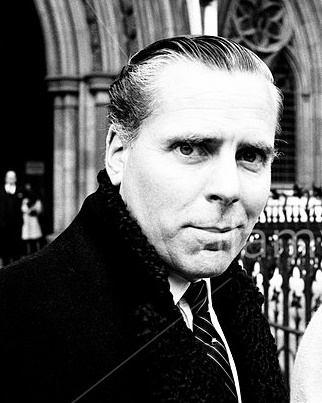
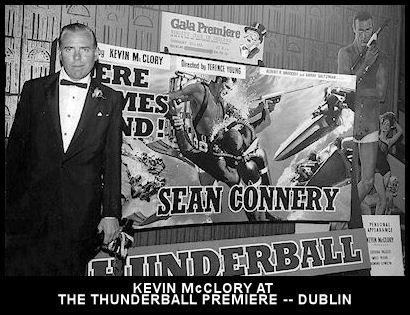
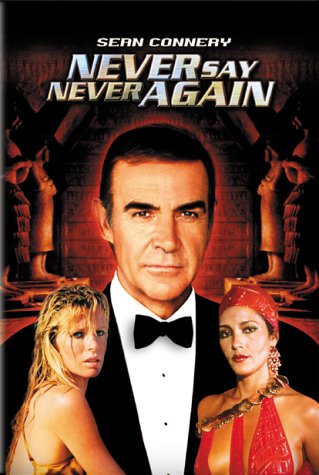
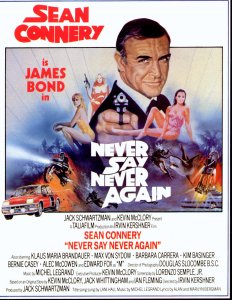
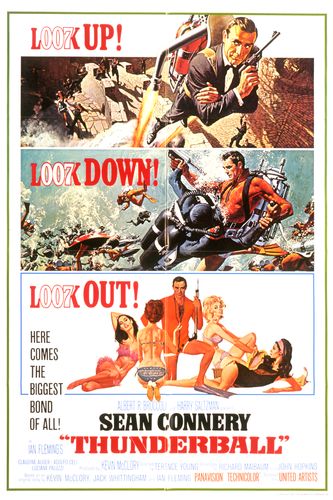
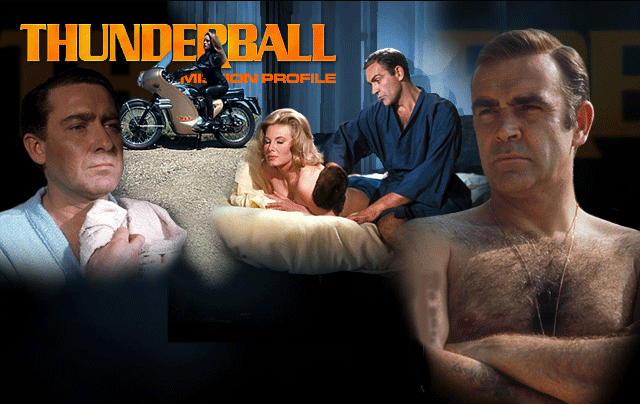
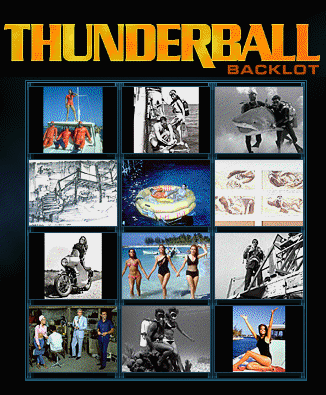
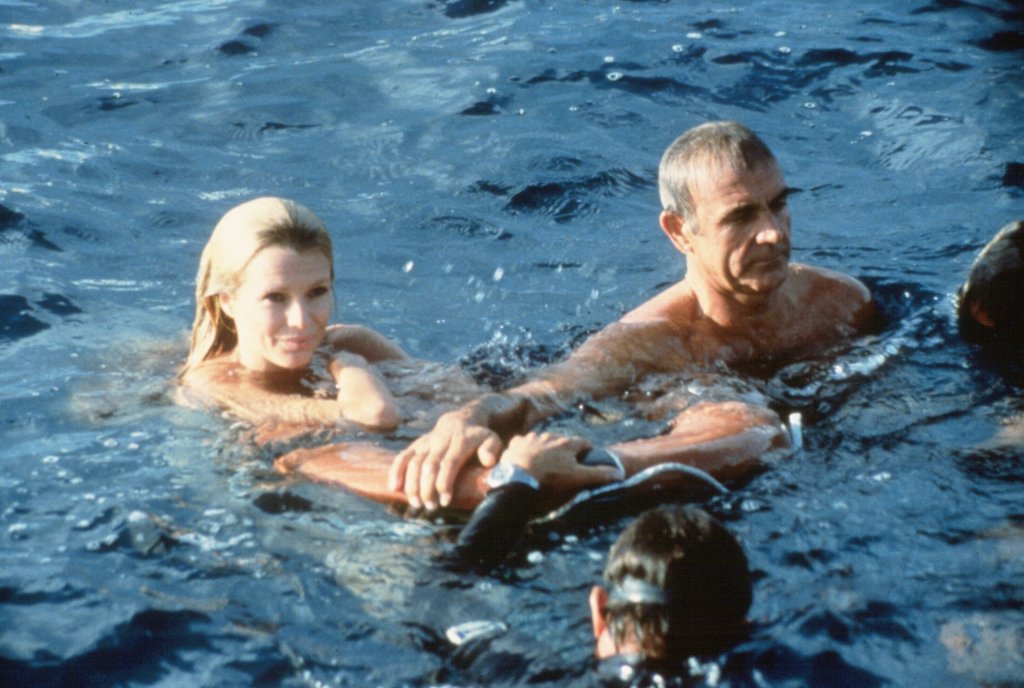 Dive Site: James Bond wrecks, Nassau, Bahamas
Dive Site: James Bond wrecks, Nassau, Bahamas